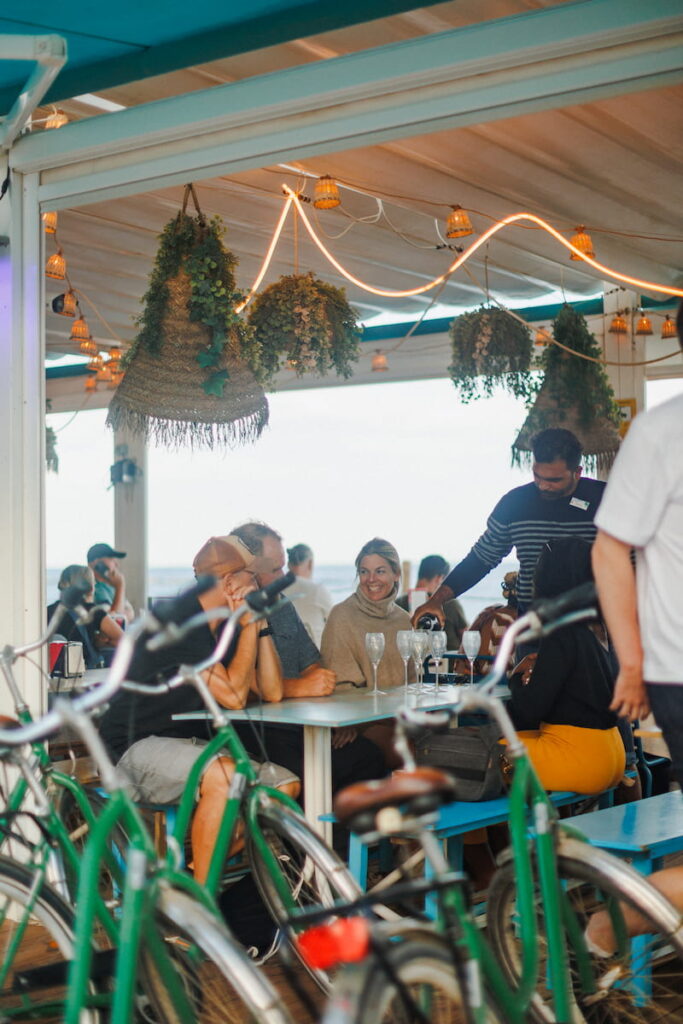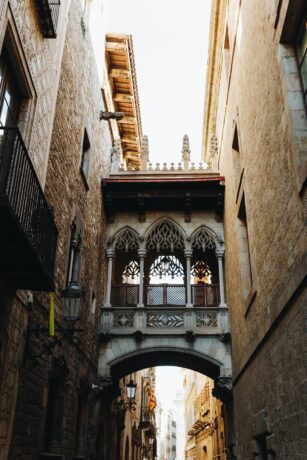The Gothic Quarter, or Barri Gòtic in Catalan, is a neighborhood rich in history and full of historical monuments and must-see sites.
Dating back to the year 133 BC, the land that the Gothic Quarter sits on today is where the Romans first settled and built. By the 2nd Century, the Gothic Quarter had expanded to 3,000-5,000 residents until 410 AD when the Visigoths seized control of the city. Sprawling with medieval and ancient Roman architecture, there is also a network of maze-like streets that snake around the city, a site just to see in itself.
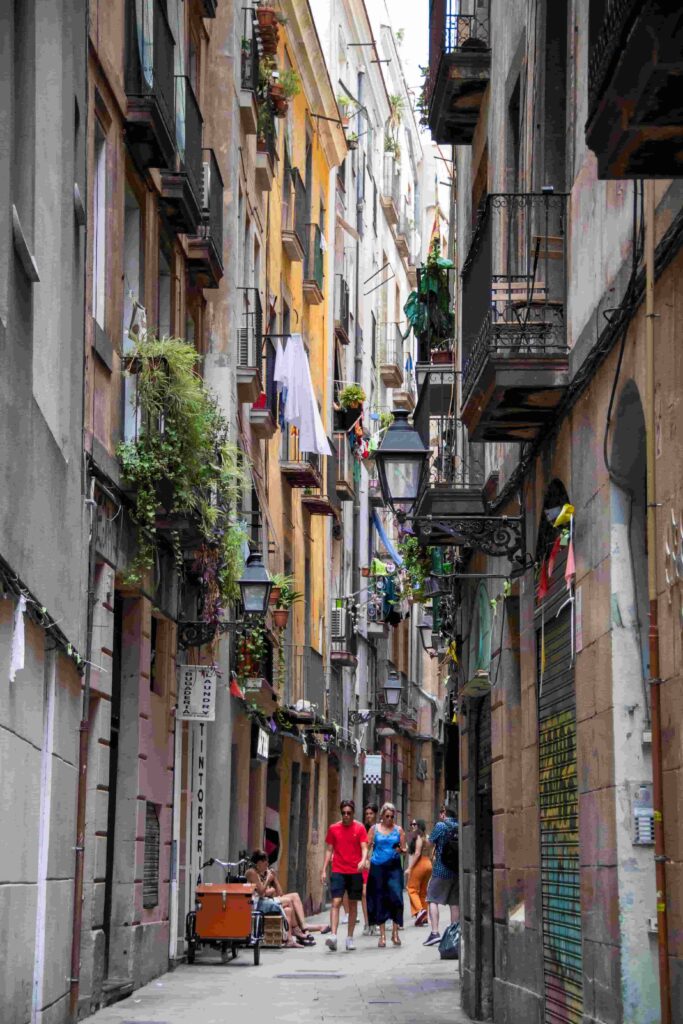
It feels like it would take a lifetime to fully experience the Gothic Quarter but if you are only visiting Barcelona for a few days, here are some hidden gems that you won’t want to miss:
Picture worthy:
1. El Pont del Bisbe Puente: Bishops Bridge
What might be the most-photographed site in the Gothic Quarter (featured at the top of this post) is El Pont del Bisbe, one of the newest architectural additions to the old city. Built in 1928 by architect Joan Rubio I Bellver, it has added much charm and attraction to the town as well as stirred up excitement. But beware, behind the charming beauty of the bridge, there is a cynical meaning to it and its embellishments: Bellver believed that modern architectural buildings should be demolished and reconstructed in a neo-gothic style.
However, the city council disagreed and didn’t let him move forward with his vision. In what people believe was an act of retaliation, Bellver carved a skull and dagger into the bridge. The urban legend is that if the dagger is removed Barcelona will fall to the ground, but if you walk under the bridge backward, facing the skull while making a wish, your wish will come true.
2. The World Begins with Every Kiss Mural
This famous mural of two people kissing was designed and installed in 2014 by Joan Fontcuberta. The mural was intended to be a temporary installment commemorating the 300th anniversary of Catalans surrendering in the War of Spanish Succession, now known as Catalonia Day or La Diada, but it still stands today.
The World Begins with Every Kiss is comprised of over 4,000 photos that strangers sent in after Fontcuberta asked followers of El Periodico newspaper to send in photos. The mural represents affection, empathy, liberty, and the lives lost during the 14-month siege before the war.
Churches
3. Barcelona Cathedral; Cathedral La Seu
While the most famous Cathedral in Barcelona is most certainly the Sagrada Familia, hidden away in the Gothic Quarter is the Barcelona Cathedral. The church is dedicated to Patron Saint, Santa Eulalia who was martyred for her religious beliefs and is believed to be buried in the crypt of the Cathedral.
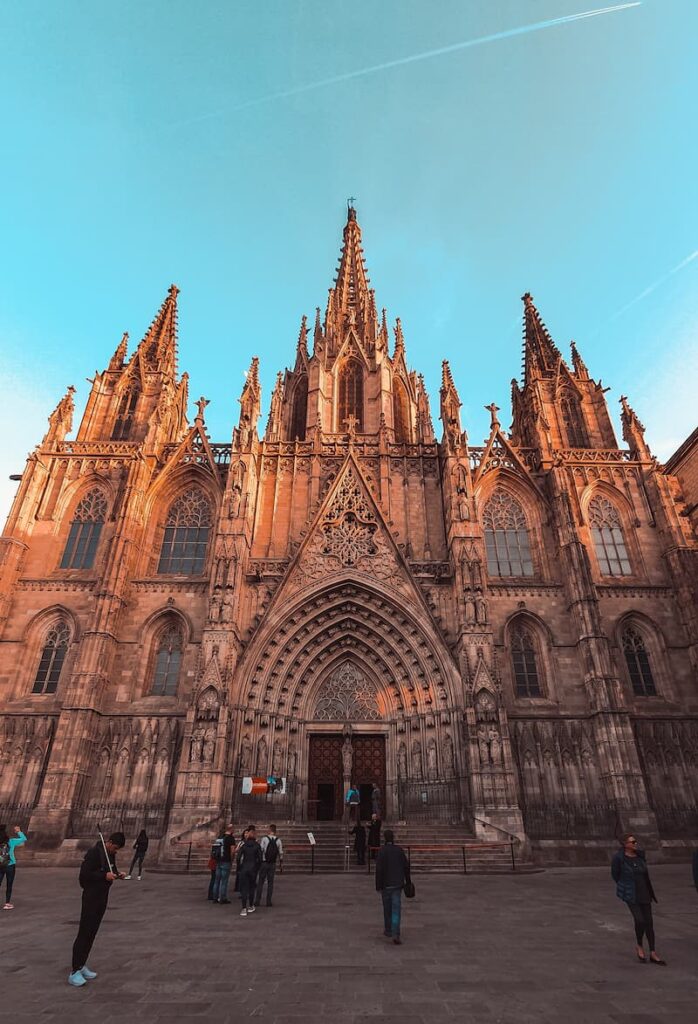
This cathedral is a unique mix of styles: Gothic, Renaissance, and Baroque because it took 150 years to be completed. Built in 1298, and finished in 1448 by architects Josep Oriol Mestres and August Font I Carreras, it is this combination of styles that makes the Barcelona Cathedral not one to miss while you are in the Gothic Quarter.
Outdoor Spaces
4. Mercat del Born
Mercat del Born used to be the site of a popular market, now you can find a historical cultural center and museum. Built in 1874, the market became one of the city’s most significant architectural buildings. Built to cater to the growing communities needs, it mainly sold fresh fruits and vegetables. Their nearby competitor’s success ultimately forced them to close up shop in 1971. During a renovation in 2002, construction was halted with the finding of an 18th-century ancient city ruins. Today, it serves as a preservation site and memorial dedicated to the Spanish War of Succession.
5. Casa de l’Ardiaca
Nestled behind the Barcelona Cathedral, this hidden gem is a getaway from the bustling streets of Barcelona. Not only will you find a charming courtyard, but you can also enjoy the views of ancient Roman Walls and aqueducts. For those interested in history, the historical Barcelona municipal archives are housed inside the Casa.

6. Parc de la Ciutadella
The history of Parc de la Ciutadella dates back to 1715. It was originally built as a fort for the army to shelter in during the war against the Bourbon kings. After the 1868 revolution, the park was turned over for use by the public and redesigned for the 1888 Universal Exhibition.
Inside the park are many picturesque monuments and attractions perfect for a family to explore or stroll with friends (or alone) including the Arc de Tromif. Along with its sprawling gardens and greenspaces, the park is also home to the Font de Cascada, a magnificent, man-made waterfall, and the Zoo of Barcelona.
Food
7. Los Caracoles
Los Caracoles, which translates to the snails, is a historical, family-founded restaurant – and has been for almost 190 years. Founded in 1835 by the Bofarull Family, this charming restaurant with its high-quality menu has gained the attention of celebrities from all around the world. Enjoy traditional Spanish and Catalan cuisine, but the must-try dish is los caracoles, the dish the restaurant is named after.
8. Bar La Plata
Bar La Plata is a long-standing bar in the Gothic Quarter, founded in 1945. Today it is still located in the same spot it opened in, a historic seventeenth-century building. What makes this bar unique is that it has served the same four authentic tapas since it opened almost 80 years ago.
The specialized tapas that they offer are not common ones you’d find around Barcelona and Spain, they include; anchoas (anchovies), ensalada con salchicha, tomates y cevolla (tomato salad with onions and sausage), anchoas y olivos (anchovies and olives) and pescaditio frito, (fried sardines). Open from 11:30-3:00 consider stopping in for lunch, but take note they are closed from 3:00-6:00 for siesta, the Spaniards take their afternoon naps very seriously. The city comes alive again in the afternoon, so stop by in the evening to enjoy some tapas and vermouth.
9. El Xampanyet
El Xamanyet is best known for its made-in-house signature sparkling cava, El Xampanyet, for which the restaurant is named after. First opened in 1929 under the name Ca l’Esteve, it wasn’t until 1972 that it was changed to El Xampanyet. Today it still bears the same decor as when it opened giving it a charming, vintage atmosphere. Don’t expect to come for a meal, as the main food served is Spain’s traditional tapas and their unique cava, El Xampanyet.
A popular spot for the locals, you can also find the bar regularly packed with tourists, so plan to arrive early if you’d like a table.
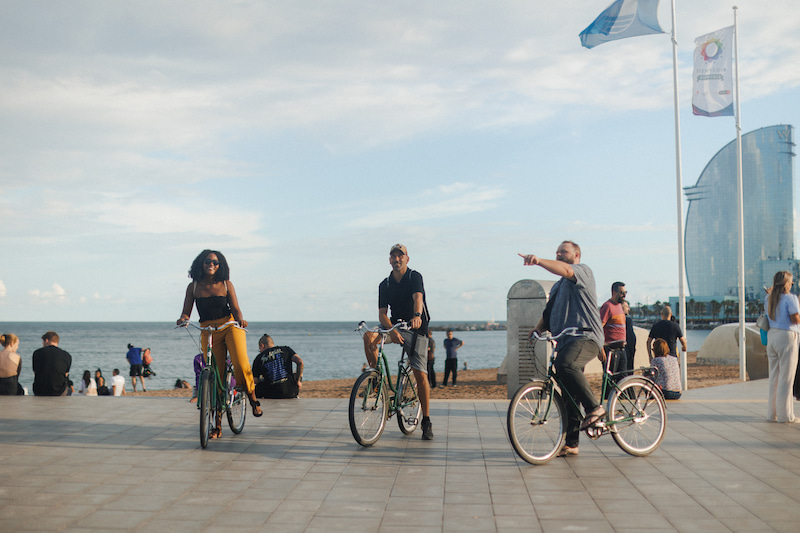
Explore the city by bike
The Gothic Quarter, rich in history, architecture, breathtaking scenery, and authentic food and drink, has many hidden gems – these are just a few.
Why explore the Gothic Quarter by bike? Bonuses include saving your feet and seeing the city in half the time it would take to walk.
We hope you will join us on our a bicycle tour of Barcelona’s Gothic Quarter with cava tasting or check out the other walking tours we offer in Barcelona.
